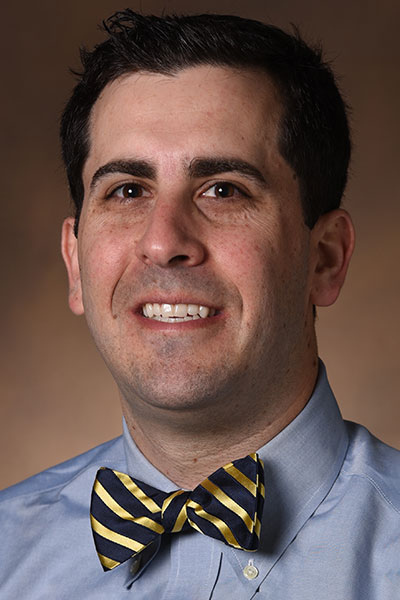
The use of e-cigarettes by adolescents and young adults constitutes an epidemic that is unraveling generations of work to reduce nicotine addiction.
A CHEST 2022 session, Taking Action in the Vaping Epidemic, on Monday, October 17, emphasized the gravity of the trend and encouraged doctors to help reverse it. Panelists explained how e-cigarette or vaping use-associated lung injury (EVALI) affects young people and offered insights into disparities in device use and health outcomes.
“We’re dealing with extremely addictive products made by companies that constantly need a new source of users because [previous users] keep dying and getting sick,” said Session Chair, Evan L. Stepp, MD, FCCP, associate professor of medicine at National Jewish Health in Denver. “These products are flavored to conceal high nicotine content, and they’re being used by vulnerable young brains that are easily influenced.”
The power to counteract those trends, Dr. Stepp said, lies in evidence linking e-cigarette use to many illnesses and also in several underused resources—namely, parents, educators, and the medical community.

Fighting a ‘nicotine arms race’
Jacob Kaslow, MD, assistant professor in pediatric allergy, immunology, and pulmonary medicine at the Monroe Carell Jr. Children’s Hospital at Vanderbilt University, noted that the popularity of smokeless nontobacco cigarettes soared among young people in 2015 when JUUL introduced sleek, colorful, flavored electronic nicotine delivery systems (ENDS).
Now, he said, a “nicotine arms race” fueled by big tobacco and enabled by biased studies is poised to become a $45 billion business within 2 or 3 years.
Currently, 14.1% of high school students and 3.3% of middle school students, or 2.55 million children, use ENDS, he said. And while the Food and Drug Administration was given until July 13, 2022, to either authorize vaping products or pull them from the market, the agency has not acted, Dr. Kaslow said.
Although 16.6% of students consider intermittent e-cigarette use safe, the devices contain much more nicotine than traditional cigarettes, Dr. Kaslow said. He noted that the highest content is in nicotine salt—potentially lethal if ingested and a particular threat to toddlers—which has resulted in skyrocketing calls to poison control centers.

Vaping is toxic
Beyond poisonous nicotine, e-cigarettes can be toxic because of exploding batteries, inhaled metal due to degraded heating coils, flavorings that can cause lung injury and disease, and e-liquids that contain chemicals such as propylene glycol—appropriate for deicing airplanes but not breathing, said Sarah Bauer, MD, assistant professor of clinical pediatrics at Indiana University School of Medicine.
Exemplifying the dangers of vaping are cases of EVALI, often linked to tetrahydrocannabinol-containing products or vitamin E acetate. Between the summer of 2019 and February of 2020, 2,807 cases of EVALI, including 68 deaths, were reported across the United States and beyond, more than one-half in individuals under 24 years old.
EVALI can cause lung, heart, flu-like, and gastrointestinal symptoms. In addition, vaping has led to case reports of hemophagocytic lymphohistiocytosis, macrophage activation syndrome, bronchiectasis, secondary pulmonary alveolar proteinosis, diffuse alveolar hemorrhage, and hemoptysis, and it leaves young adults more susceptible to COVID-19, dental problems, and asthma exacerbations, Dr. Bauer said.
While pulmonary function, imaging, and respiratory symptoms tend to improve once smoking has stopped, other symptoms may persist.
“The earlier you start nicotine products, the stronger the addiction and more difficult to quit,” Dr. Bauer said. “Starting at 9 or 10 years old is associated with inferior cognitive performance and brain development with sustained effects at a 2-year follow-up.”

For health equity, eliminate disparities
Complicating the issue are disparities across populations regarding smoking frequency and preferences, as well as cessation rates, treatment access, and health outcomes, said Sucharita Kher, MD, associate professor of medicine at Tufts University School of Medicine.
From our nation’s experience with tobacco products, we know that “the pressures of discrimination, poverty, and other social determinants of health can increase use,” she said, adding that understanding the smoking patterns of each racial and ethnic group can contribute to policies that thoroughly protect the public.
To achieve health equity, Dr. Kher suggested deploying diversity, equity, and inclusion efforts and bias reduction in a triple-pronged approach across clinical work, research, and policy discussions.
Get involved
Health professionals are well equipped to “get involved in the fight against big tobacco,” not only by educating their patients but also by giving talks to the local groups with the most influence: children, parents, and teachers, Dr. Stepp said.
Doctors can also appeal to legislative bodies for flavor bans to eradicate a major driver of youth e-cigarette use, as well as policies to phase out the sale of ENDS on the premise that their availability violates human rights, he said. For example, CHEST recently sent a letter to the US Food and Drug Administration supporting a proposed rule that would prohibit characterizing flavors in cigars and cigarettes.
Having initially joined the movement as “an angry lung doctor with a kid entering middle school,” Dr. Stepp urged his colleagues to follow suit. “If a textbook introvert like me can do it,” he said, “you can, too.”
Join us at CHEST 2025
Save the date for the next Annual Meeting, October 19 to 22, 2025, in Chicago. CHEST 2025 will explore the latest advancements in pulmonary, critical care, and sleep medicine, with a focus on innovation and the future, just as the city itself embodies progress and reinvention.





